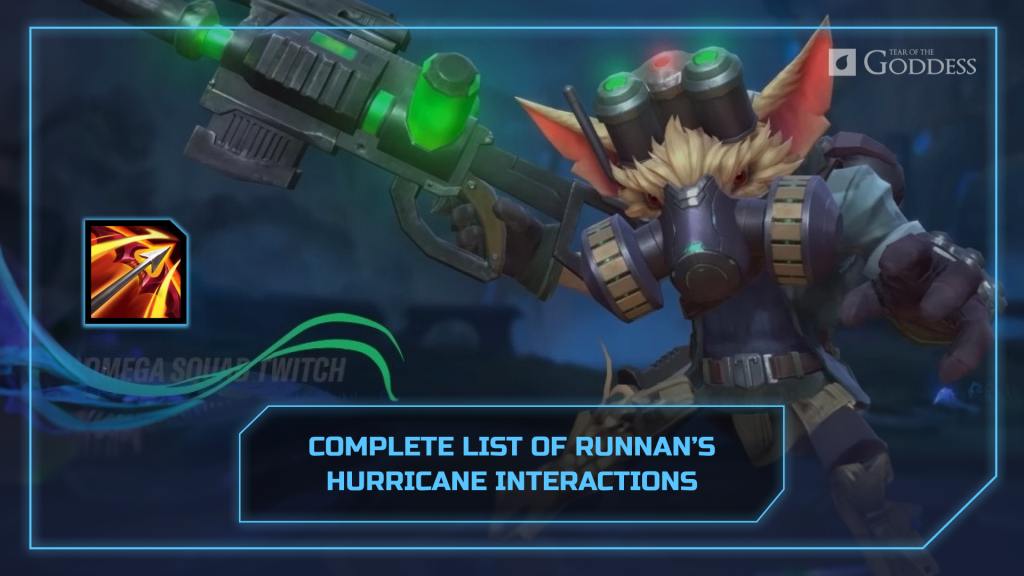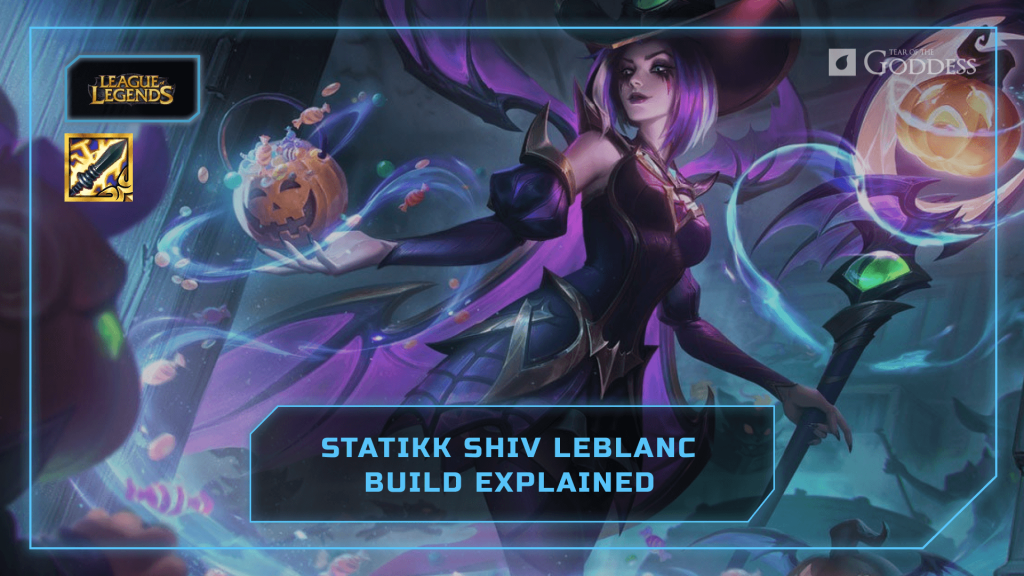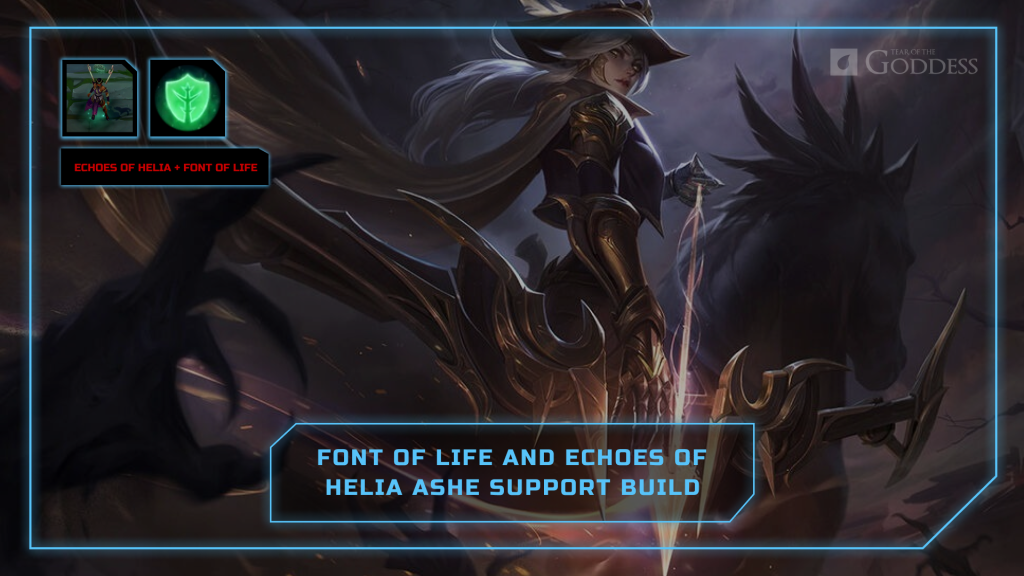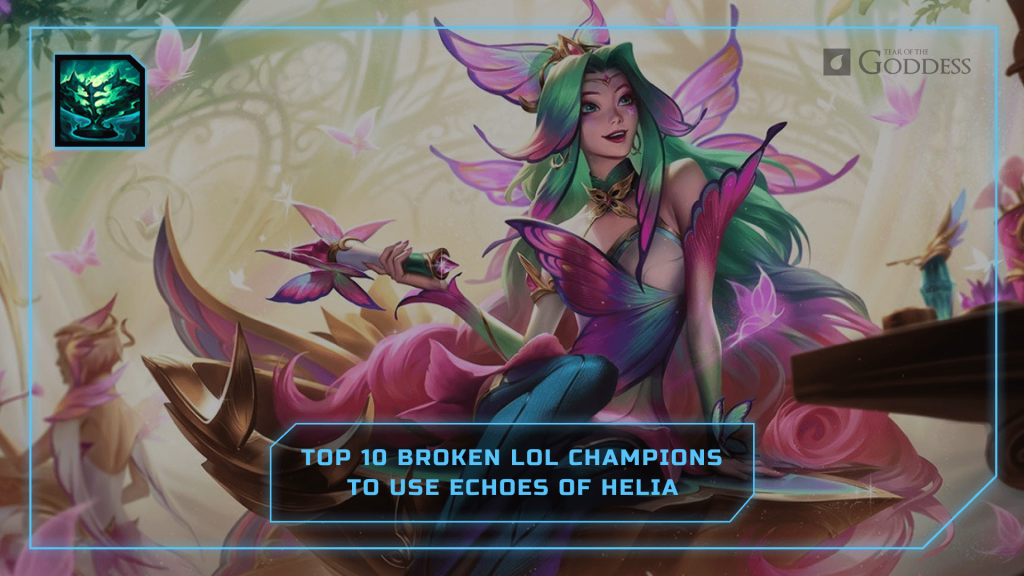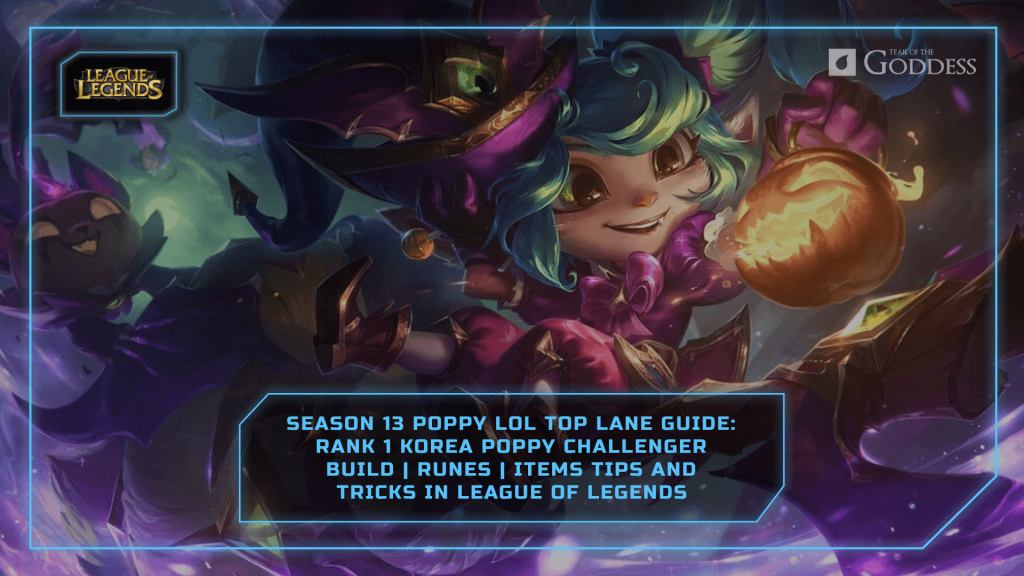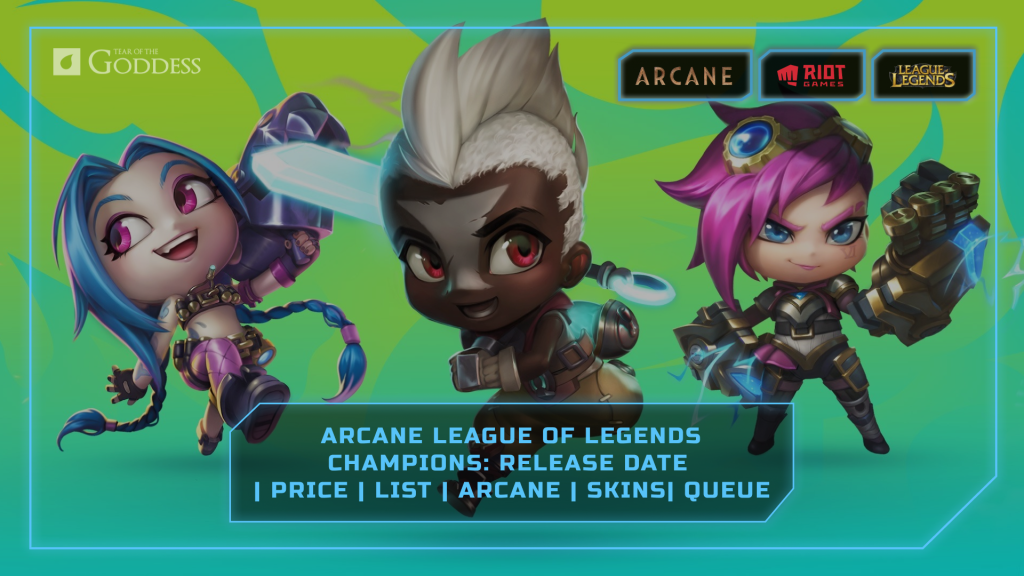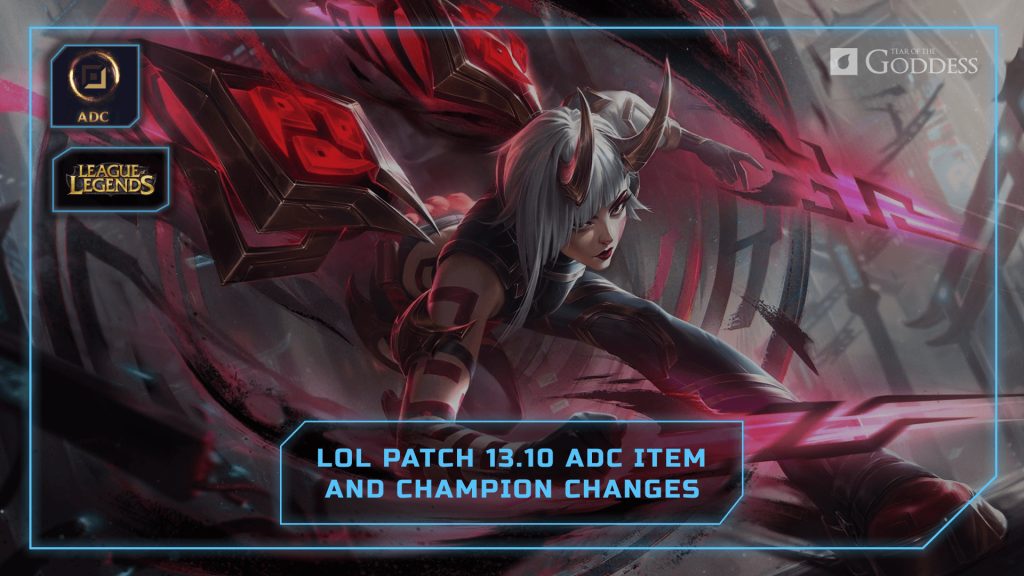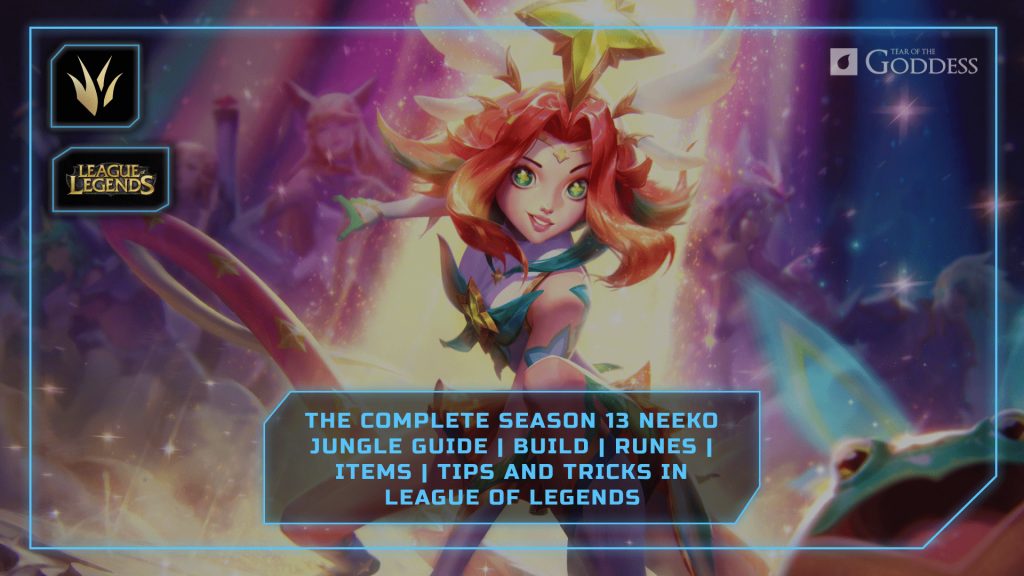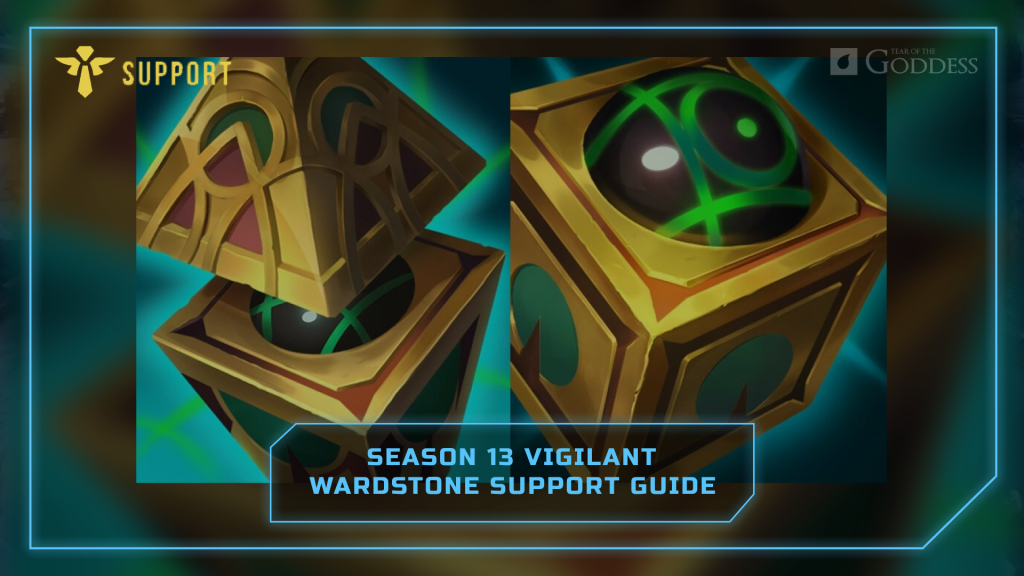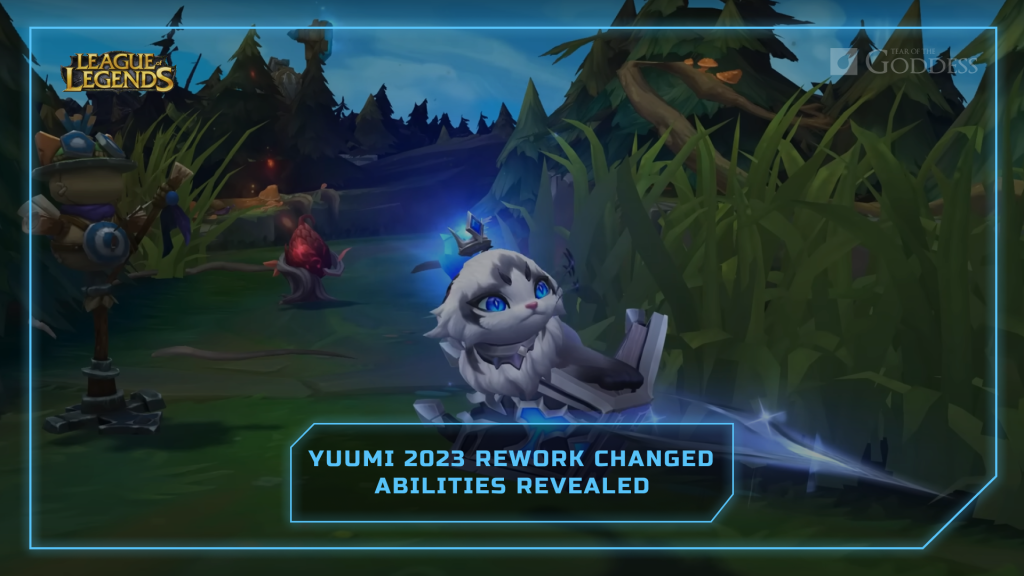Gold Generation and Comeback Mechanics in League of Legends
Generating gold and acquiring experience leads are the most important aspects when it comes to winning a League of Legends game. But how have recent gameplay changes impacted game quality, and why is even Faker worried about it?
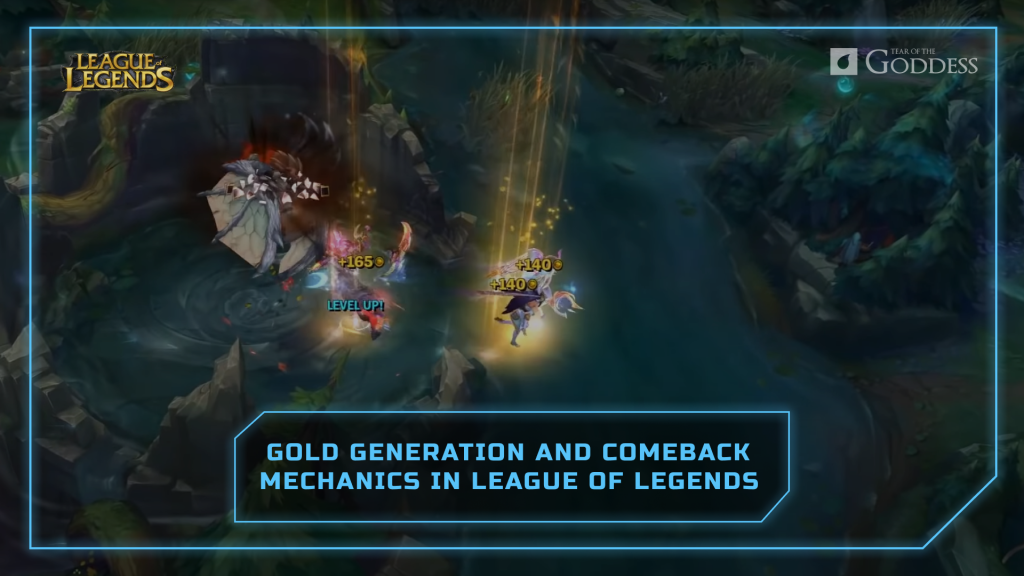
Winning a League of Legends game is a lot harder than anyone could imagine. The reason why MOBA games such as League and Dota have high skill floors are the many variables interacting with the end result. The objective of these games is to destroy the enemy’s base. But what is the most optimal way to achieve this? Let’s dive deeper.
Generating Gold Income in League of Legends
A lot of things go into deciding the outcome of a League of Legends game. This might seem weird to many, but since esports are a major business these days, everything needs to be taken into consideration. As a player, every decision you make on Summoners Rift will somehow impact the end result. Most players love to avoid this topic and blame their teammates. But this game has existed for 13 years. And for that entire time, one thing has stayed true. The champion with the most gold and experience is the strongest player on the map.
After disappointing losses, #Faker🐧speaks up about how soloQ in LoL these days easily end up in a landslide win/loss:
— 사셰 ꜱᴀᴄʜᴇᴛ🌷 (@_Sachet_) January 12, 2023
He sees 2 main reasons:
1. Current design of the game snowballing out of control for the side winning the early phase
2. Something is wrong with the MMR system https://t.co/VxKG444aOB
How they decide to use their gold is another question. But to become a great MOBA player, you need to master the art of getting a lead. In League of Legends, there are multiple ways to generate these leads.
Creep Score (CS)
The math is simple. Every minion that dies within 1200 range of you grants you experience points. If you manage to last hit and kill the minion, you receive a gold reward for it. In League of Legends, that’s what farming means. The more efficient and skilled you become at doing this, the better you will be as a player. Minions spawn at equal rates for both teams. They also bring the same amount of value gold and experience-wise. So one of the best ways to generate a lead against your opponent, is to farm better than him. Pro players have taken this to the extreme. In high stake games, the only source of income are minion waves. And they make the best of it.
Tower Plating Gold
But you can’t just focus on farming. League of Legends is not a PvE game (Player versus environment). Since it’s a PvP game (Player versus player), you will need to interact with your opponent. This is what the laning phase represents. Where you and your opponents match up against each other in your assigned role/ lane with the respective champions you have chosen. This adds a whole new level of variability in gameplay but the end goal is simple. Force your opponent to leave the lane, by will or force. Trading blows with him while farming waves is the standard laning process. If these trades result in a kill, you are rewarded with gold and experience points. Both things you want to obtain.
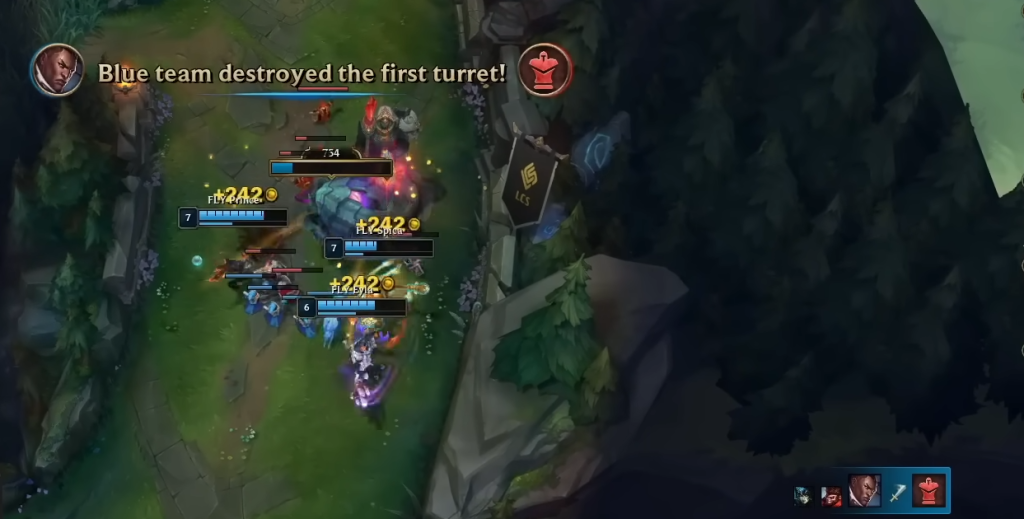
If your opponent leaves the lane in fear of dying, you get to feast on tower plates. Before 14 minutes, every outer tower in the three assigned lanes has tower plates. With 5 plates per tower and each plate giving 175 gold, the difference in skill can quickly balloon into a serious lead. Add local and global reward gold for destroying a tower on top of a first tower bonus, and a single player can create a 1400 gold lead all by himself. That much gold is roughly 50% worth of the most expensive items in the game. It equals out to more than 3 champion kills and over 60 minions farmed or creep score.
Neutral Objectives and Jungle Monsters
Once you are done fighting your opponent and taking their tower, you should turn your focus on neutral objectives. These are placed in a neutral spot on the map, for which you should fight to take control. Creating a gold lead early on helps a lot in accomplishing this. Having more gold and experience means you have more items and more skill points in your abilities. This in turn makes your abilities more powerful. The Rift Herald is placed on the top side of the map, while the Dragons are placed on the bottom side.
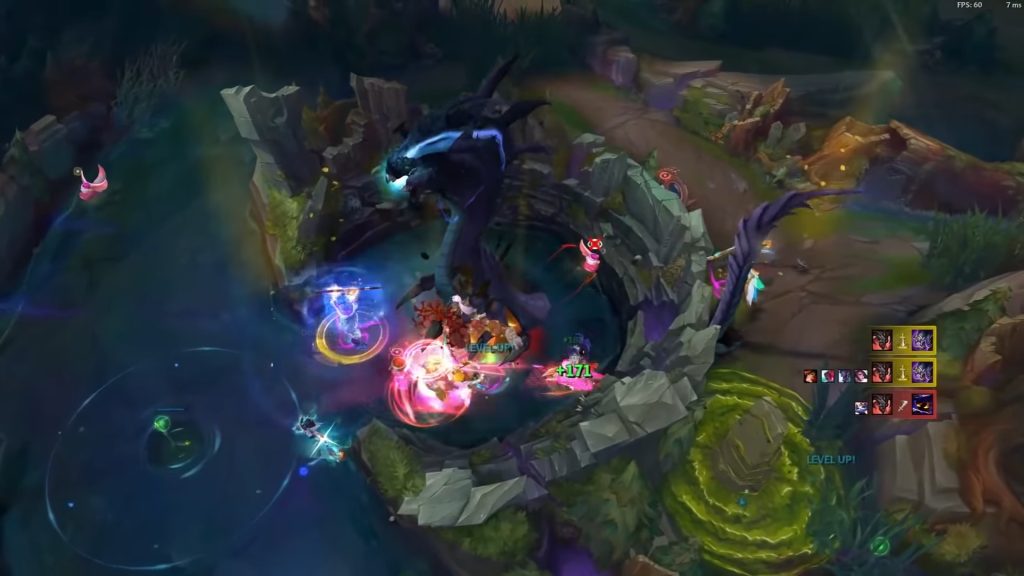
The Rift Herald is a big jungle monster that assists the team who claimed it in destroying towers. Not only does obtaining the Rift Herald grant you local and global reward gold, but it also destroys towers that also give gold. The dragons on the other hand, grant a small amount of gold but a large increase in permanent combat stats. And these stack and grow exponentially, giving your team a lot of combat stats that can’t be purchased or measured with gold.
Enemy Kill Gold
All of these methods grant the player gold and experience. But none of them has been as highlighted by the community as getting kills. Killing your opponents works in both ways. You receive gold and experience for it. They can’t receive either since they are waiting to respawn. After eliminating your opponent, you should take the upcoming wave, do as much damage to their tower and make sure to secure a neutral objective or counter jungle monsters on their side of the map to enlarge your lead. Killing your opponent over and over again will eventually lead to smaller gold and experience gains. So the real skill that goes into winning a League of Legends game is how you use that lead to impact the rest of the map. And that is where comeback mechanics come into play.
Comeback Mechanics in League of Legends
Comeback mechanics have been introduced to League of Legends over time. They are often destined to be the antidote for other snowball mechanics added to the game. Just this year, we have seen the Rift Herald and second tower get increased gold values. This happened after the durability update, after which bot laners started dominating the game, and top laners were left with few options. And that’s before you consider runes like Treasure Hunter and First Strike. Triumph has been giving 3-400 gold per game for a few years now. In the Inspiration tree players can secure free boots and a free stopwatch, reducing the cost of their build path by 300 to 750 gold.
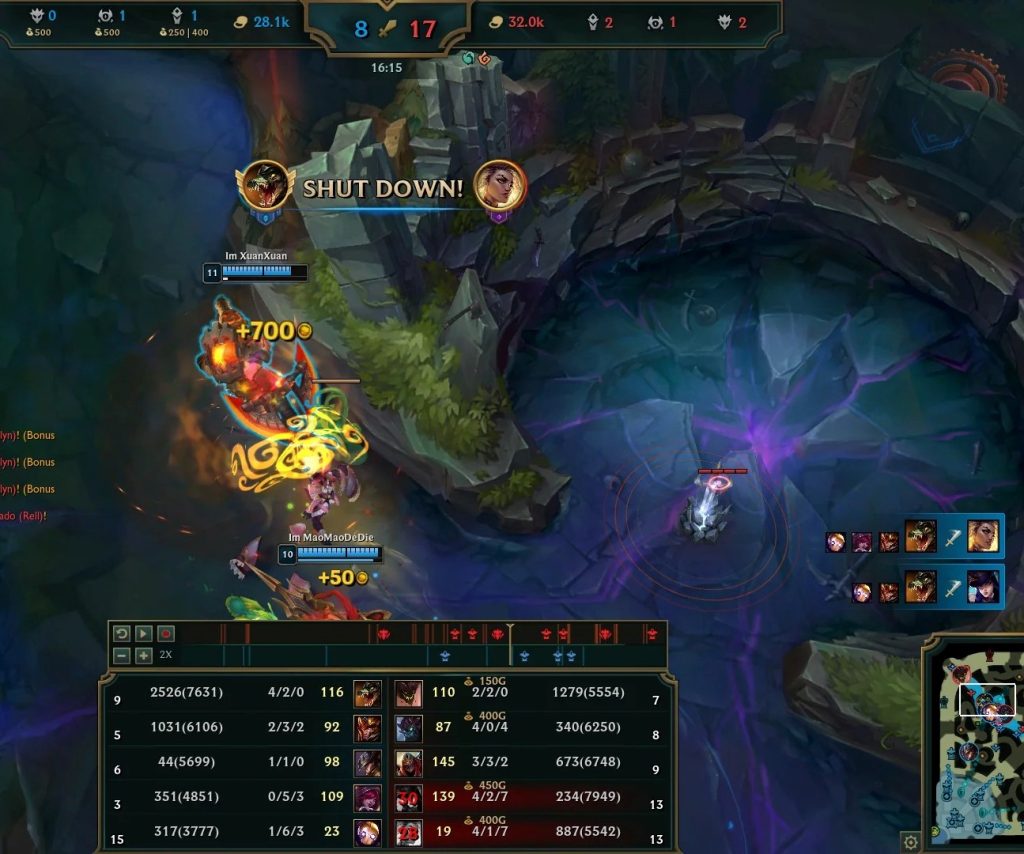
The easiest way Riot Games has found to do this is through bounties. In seasons prior, only champion bounties existed. Now, once a team gets a certain amount of gold and experience lead, objectives on the map have bounties on them. These include towers and neutral jungle monsters. Many players have argued this removes skill expression in the game. But Riot is sticking to its methods. So let’s dive deeper and find out how these mechanics actually work.
Champion bounties in League of Legends Explained
As we said, teams earn gold rewards when they kill enemy champions. This reward is the bounty of the killed champion. The bounty of a champion depends on the number of consecutive kills or deaths they have registered. The more consecutive kills a champion has, the bigger their bounty. The more consecutive deaths a champion has, the smaller their bounty. That’s how Riot gives the losing team a chance back in the game. At the same time, this system prevents intentional feeders from giving the enemy team 5 items in less than 20 minutes. Here is how the bounty reward is calculated:
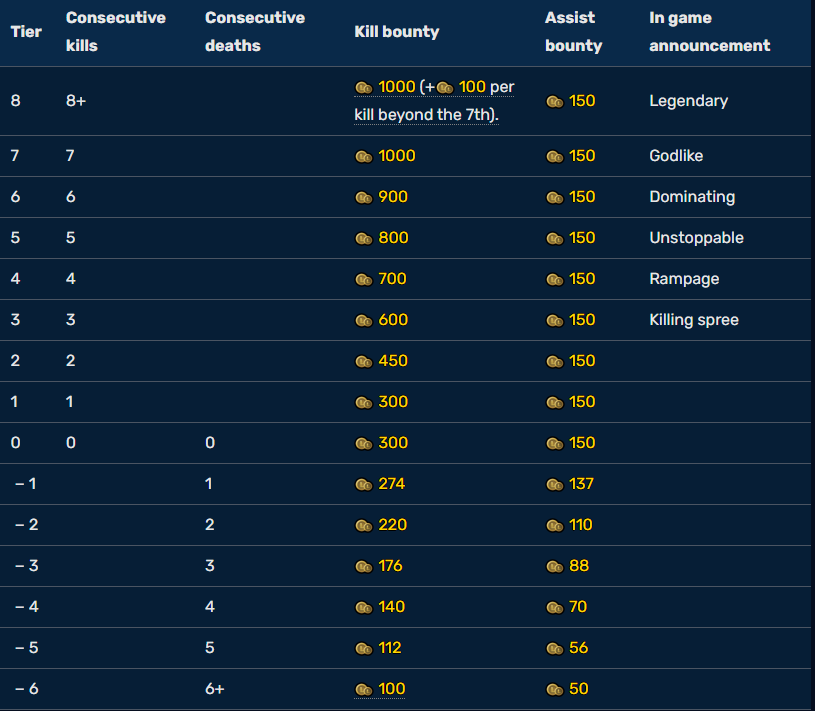
Apart from kills, champion bounties are measured with other aspects in mind. Creep Score is one of them, and the bounty gets increased by 100 gold for every 500 gold the enemy has over you in pure CS numbers. A bounty cannot go over 700 gold in terms of value. It also can be changed during combat. So if a player who deserves to have a 1500 gold bounty dies after killing two enemies, he will respawn with another 700 gold bounty, despite giving over 1000 gold to the enemy. But Riot Games realized that these measures were not enough to offset the gold generated through other means we already mentioned, like Tower Plating Gold and Neutral Objectives.
Objective bounties in League of Legends Explained
And that is why, Riot Games introduced objective bounties at the start of season 12. Their idea at the time was to force the winning side to move more wisely while giving the other team a limited opportunity to get back in the game. And while champion bounties might feel oppressive since you can’t go for risky plays once you are worth a Needlessly Large Rod, objective bounties work in a different way. That way, team compositions that thrive in the early game don’t have to be nerfed. At the same time, scaling team compositions can rest knowing they will eventually win the game.
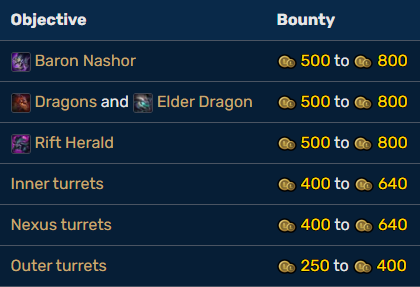
Objective Bounties are only available after 14 minutes. They activate and deactivate 60 seconds after a gold threshold has been reached. They are highlighted on the map with yellow and are visible to both teams. When an objective bounty is claimed, the bounty’s gold is distributed evenly among all team members. The bounty’s value can increase by up to 60% as a team falls further behind. These are calculated based on the losing team’s experience and gold deficit as well as how many more Dragons and Towers the winning team has taken.
How do Objective Bounties work in League of Legends?
Well Riot Games have never actually revealed the measurement system that goes into this calculation out of fear that some exploits might happen. And it kind of happened early last season, when the Smite Janna Top meta happened. Riot prevented this by doubling the number of points scored in their metric if a team had two support items, so it quickly died out. If you are wondering what those points mean, here is the breakdown.
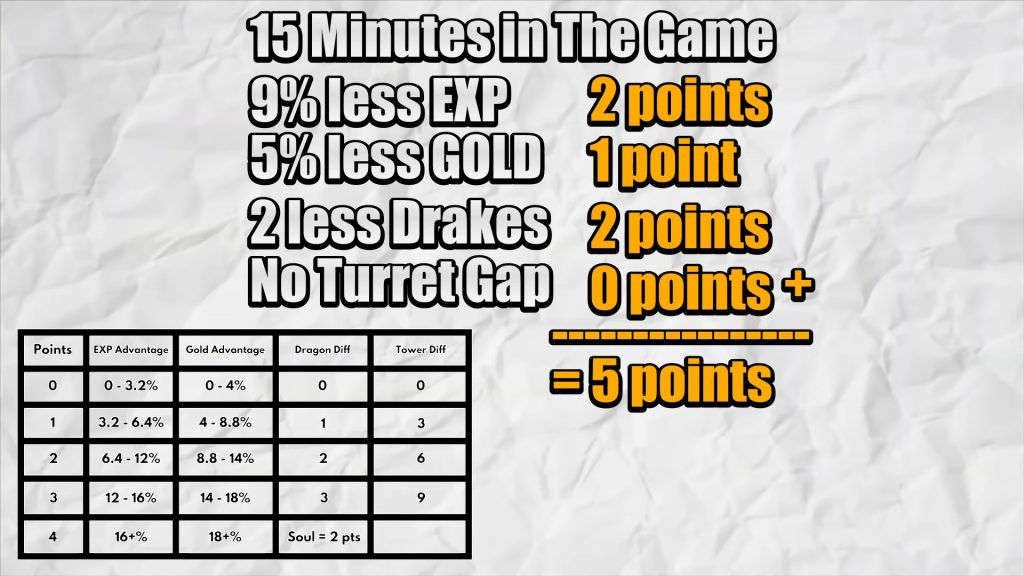
Each team gets a point whenever they trail in one of the four major statistics. Those are total team gold and experience, the number of dragons slain, and towers taken. Each tier on this table gives one point except for Dragon Soul and Elder Dragon, which give 2 because they are considered game-ending buffs. So the next time you expect Objective Bounties and they don’t show up, flame your jungler for stealing that one dragon your team has. He might have given you a win condition or taken it away from you. Regardless, Objective Bounties are here to stay, so learn how to capitalize on them.


